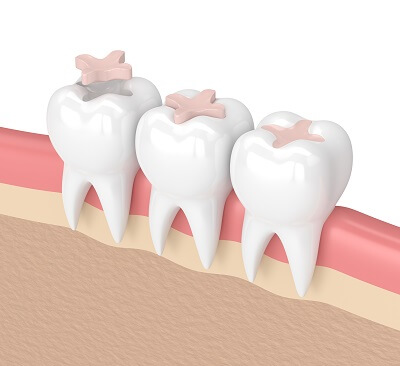Dental Sealants
Preventative Care
 Dental sealants are a type of dental filling that is used to protect teeth from cavities. These sealants are thin plastic coatings typically applied to the chewing surfaces of teeth, or on the surfaces of deep grooves in molars and premolars. Sealants are most often applied to the teeth of children because they have a higher incidence of cavities than adults. Sealants can be applied to teeth as soon as they erupt into the mouth, usually around age 6. Dental sealants have been proven to be very effective in protecting teeth against decay, with a cavity rate reduction of up to 82%.
Dental sealants are a type of dental filling that is used to protect teeth from cavities. These sealants are thin plastic coatings typically applied to the chewing surfaces of teeth, or on the surfaces of deep grooves in molars and premolars. Sealants are most often applied to the teeth of children because they have a higher incidence of cavities than adults. Sealants can be applied to teeth as soon as they erupt into the mouth, usually around age 6. Dental sealants have been proven to be very effective in protecting teeth against decay, with a cavity rate reduction of up to 82%.
Sealants work by filling in the space between the tooth and the gum line, where food and bacteria can get trapped. This prevents plaque from building up and causing cavities.
How Sealants Are Placed
The first step is to take an X-ray of the patient’s mouth and teeth. This will help identify any potential problems with the patient’s teeth that could lead to dental disease or tooth decay.
A sealant is usually applied to molars, premolars, and canines in both arches of the mouth when they erupt (come out through the gums) or soon afterwards if there is a high risk for decay due to spacing or other conditions.
A dental sealant is applied by a dentist or dental hygienist when the tooth has erupted through the gum line and can be seen above the gums. The tooth is prepared by removing any rough spots with a special sanding instrument called an abrasive disk, smoothing it with an abrasive polishing disk, or applying a bonding agent such as dental adhesive.
The dental sealant is then applied in a thin layer over the chewing surface and then a curing light is used to harden it. The sealant is usually applied in one visit but may require more than one visit depending on how much tooth structure needs to be sealed.
The dentist will then wait 30 minutes before checking back on the patient again. If everything goes to plan, they will remove any excess sealant or apply more sealant.
Adding sealants to teeth is not a permanent treatment, but it can last up to 10 years.
Taking Care of Dental Sealants
Although dental sealants can last for many years, they may wear down over time and need to be replaced. Teeth that have been sealed require the same diligent dental hygiene as unsealed teeth. You should continue to brush and floss your teeth daily and have regular professional cleanings.
Talk to our dentist about dental sealants by making an appointment at Sun City Dental in El Paso.
